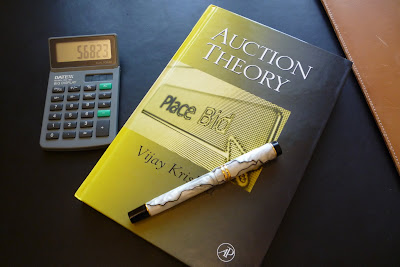Wednesday, May 4, 2011
Final Project Deadline
Final projects are due on May 16 at 1159pm Hawaii time. Please send as a PDF.
Friday, April 29, 2011
Mixed Strategies Highlights

Choosing the Right Strategy?
In our section on mixed strategies, we studied games that had no set of deterministic best responses. For instance, in soccer penalty kicks, the best response to a keeper who defends left is to kick right, but then the keeper's best response is to defend to the right, which leads to kicking to the left as being optimal and we end up going in a circle. The solution to the "circle" problem is to study mixed strategy equilibria. These strategies can be understood literally as using randomization schemes to determine which strategy to play.
Wednesday, April 27, 2011
Signaling Highlights
Please find the results of the value of education experiment here.
We studied signaling through the value of education game. In signaling games, the key parameter in the mental model are the beliefs of employers about a worker's type following each signal. In a separating equilibrium, different signals produce different beliefs. In our game, we saw that a separating equilibrium consisted of believing that grade school (or BS) were associated with low types while MBA was associated with being a high type. In that case, a low type could not gain by pretending to be a high type and, therefore, these beliefs are confirmed by actions. We also saw that one could not sustain a separating equilibrium by believing that low types choose grade school while high types choose BS or MBA. The reason is that the marginal benefit to a low type from imitating a high type and getting a BS was 100k while the marginal cost was only 80k; therefore, low types will "invade" the BS population and thereby destroy the signal.
Let us reflect on this for a moment. 20-30 years ago, an MBA was unnecessary to climb to the highest levels in business whereas now it more or less is required. What has changed over that time is undergraduate enrollments. 20-30 years ago, many people ended their education with a high school degree. Now, there are strong incentives to proceed to get an undergraduate degree and many subsidies and loans to make this affordable. In a sense, an undergraduate education is now too cheap to offer a useful signal. In our game, this signal inflation was altogether a bad thing since there were no gains to human capital from signaling. Of course, the reality is that there are some human capital gains. Nonetheless, the results of the game indicate that there is an incentive to overinvest in education purely for the signaling aspect. In other words, the problem might be too much education rather than too little.
We studied signaling through the value of education game. In signaling games, the key parameter in the mental model are the beliefs of employers about a worker's type following each signal. In a separating equilibrium, different signals produce different beliefs. In our game, we saw that a separating equilibrium consisted of believing that grade school (or BS) were associated with low types while MBA was associated with being a high type. In that case, a low type could not gain by pretending to be a high type and, therefore, these beliefs are confirmed by actions. We also saw that one could not sustain a separating equilibrium by believing that low types choose grade school while high types choose BS or MBA. The reason is that the marginal benefit to a low type from imitating a high type and getting a BS was 100k while the marginal cost was only 80k; therefore, low types will "invade" the BS population and thereby destroy the signal.
Let us reflect on this for a moment. 20-30 years ago, an MBA was unnecessary to climb to the highest levels in business whereas now it more or less is required. What has changed over that time is undergraduate enrollments. 20-30 years ago, many people ended their education with a high school degree. Now, there are strong incentives to proceed to get an undergraduate degree and many subsidies and loans to make this affordable. In a sense, an undergraduate education is now too cheap to offer a useful signal. In our game, this signal inflation was altogether a bad thing since there were no gains to human capital from signaling. Of course, the reality is that there are some human capital gains. Nonetheless, the results of the game indicate that there is an incentive to overinvest in education purely for the signaling aspect. In other words, the problem might be too much education rather than too little.
Preso Order
Here is my best reconstruction of the preso order on the basis of your cards from last class. Please alert me if any of this is screwed up.
Class #28 (Weds)
1. YNK
2. MAX
3. AGT
4. WSID
5. NAS
6. F
7. HAZ
Class #29 (Mon)
1. REPS
2. H8
3. MOAB
4. RDR
5. MOTN
6. BNT
7. SEA
8. PLAYA
Class #28 (Weds)
1. YNK
2. MAX
3. AGT
4. WSID
5. NAS
6. F
7. HAZ
Class #29 (Mon)
1. REPS
2. H8
3. MOAB
4. RDR
5. MOTN
6. BNT
7. SEA
8. PLAYA
Tuesday, April 19, 2011
Aside: Photos, creativity, and conversations

I was delighted to get a comment after class on the photos on the blog. When I'm not professoring, I'm an amateur photographer. Indeed, other than working on game theory, photography is my other great passion. I mentioned creativity in an earlier aside and I do think this is perhaps the most important thing to gain from an MBA education. To me, both game theory and photography offer a chance to "see the world differently," which is the essence of creativity in my view.
Class # 23 Highlights

Surviving the War of Attrition
We closed the auction unit with a cautionary tale about modeling behavior. The key to fighting a war of attrition is to determine the hazard rate of concessions. Now, there is a tendency toward overoptimism in estimating this hazard rate and, as a consequence, the war tends to lost longer than expected. We saw this vividly in the $20 bill auction where the total spend exceeded the value of the bill by $7. This also illustrates that the revenue equivalence theorem is a starting point rather than an ending point. Accounting for behavioral factors, risk preferences, framing and so on is essential in developing good mental models.
Monday, April 18, 2011
Mid-Semester Projects
I've now added links for all the mid-semester projects, so you can read what your colleagues have written. I would especially call your attention to MOAB's mid-semester project. This is by far the nicest mid-semester project I've seen since running game theory. They study the NYSE/Euronext acquisition. Notice how they pin down 4 key bidding points in the negotiation based on the inside versus outside option equalization in second price auctions. Notice also the care in devising what these valuations are. They are facing a potentially super-complicated game, but used the tools of game theory to isolate and analyze the key aspects.
Check it out here.
Check it out here.
Wednesday, April 13, 2011
Class #22 Highlights
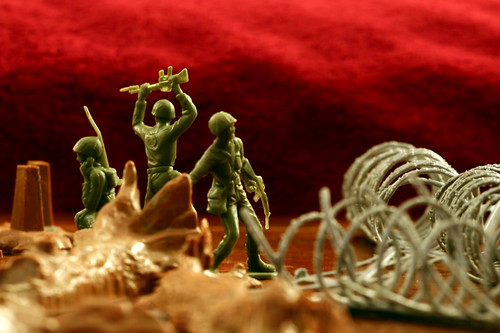
A War of Attrition
This class completed our auction unit. There were two key highlights:
1. N is a big deal. More than anything else, the number of bidders is the key variable in constructing a successful auction. We illustrated this in two ways. First, a quick case about the failure of the German 3g auctions owing to the fact that the number of licenses equaled the number of large players in the industry. Second, we showed that the worst auction beats the best negotiation if it attracts one additional bidder. This latter result is important in thinking about M&A.
2. How to think about wars of attrition. Wars of attrition arise in many business situations. In strategy, both the bitter competition and Ryanair cases are about anticipating wars of attrition.
Tuesday, April 12, 2011
An Update from the Penny Auction Front
The auction unit seemed to inspire a burst of interactivity on your part. I got a number of comments about penny auctions and slot auctions. Here are some highlights:
Leigh Fiske writes:
Quibids (http://www.quibids.com/) is a new "penny auction" site in the model of swoopo.com. Each bid costs $0.60 to make, and in the last few minutes of the auction, each new bid extends the remaining time by a certain amount. It's pretty interesting. They must think that their business model has a higher likelihood of success than their predecessors'!
Rosie Wang notes the demise of Swoopo and finds the effective markups on penny auctions rather yucky:
Thought you'd be interested to note that Swoopo has recently filed for bankruptcy. (http://technologizer.com/2011/03/25/swoopo-quietly-files-for-bankruptcy/) I was originally going to write you and let you know about another site called "oohilove" that had a very similar penny auction but for luxury handbags and accessories, only to find the site shuttered and that it's owned by the same company as Swoopo. I once did a calculation on oohilove though to see how much money they were making (since each bid is also $1 and bids go up in $0.02 increments), and was a bit disgusted by the multiple they were getting on the actual value of the product.
Gwyn Jones notes the burgeoning academic literature on position auctions. Here is a piece by Google's Chief Economist (and Berkeley Professor) Hal Varian title "Position Auctions" Here is a broad survey on Google style auctions from the source of all knowledge, Wikipedia.
Finally, a piece about waiting in line to see Star Wars.
Happy reading!
The Two Principles
Our auctions unit highlighted two principles: The Revenue Equivalence Principle and The Linkage Principle. The Revenue Equivalence Principle is a handy result allowing us to compare all sorts of auctions. It roughly says this:
Any auction where: (1) High bidder wins; (2) Free opt-out; (3) Bidders are similar; and (4) Bids are for cash yields the same expected revenue as a Vickrey auction. In fact, it says something a little stronger. It says that the expected payment for a bidder with value v is the same across auction forms. This auction pulls together a lot of non-auction settings such as price wars, R&D races, waiting times in line, and so on. It should be viewed as a first step and not a final answer. For instance, risk aversion will "break" the result. Bidders who differ a lot (i.e. one bidder known to be high value with a competitive fringe surrounding) will break the result. Multiple units that differ from one another (i.e. the slot auction) will break the result. But it's an essential starting point.
Our second principle was linkage. This roughly states that the more linked a bidder's payment is to value, the more revenues the auctioneer earns. We saw this sharply in comparing debt to equity. Since equity has linkage, it yields more money. It can also be used for disclosure strategies when values are correlated. For instance, suppose that an auctioneer is selling rights to an oil tract. Here, bidders have a common value for the tract (equal to the amount of oil under it). The linkage principle says that the auctioneer is better off, on average, if it reveals information about the value of the tract (i.e. seismological studies) than when it does not. In other words, disclosure is the best policy even if it means sometimes disclosing unfavorable information.
Class #21 Highlights
This class featured guest speaker Elizabeth Churchill talking about the evolving experience of shopping. Her slides are now posted up on the course website. More importantly, here is Elizabeth's light-hearted blog post about the topic:
Rat, Rational or Seething Cauldron of Desire: Designing the Shopper
Rat, Rational or Seething Cauldron of Desire: Designing the Shopper
Monday, April 4, 2011
Class # 19 Highlights
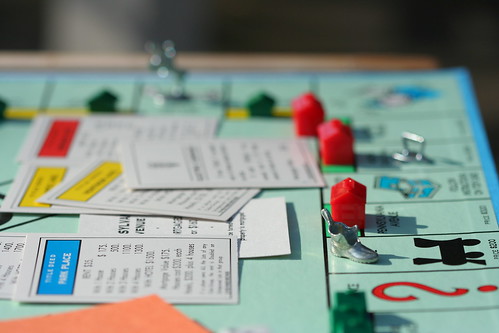
Structuring a deal
This is the first part of a two part class on structuring deals through auctions. In the experiment, we considered two dimensions of a deal: the degree of transparency and debt versus equity. Deals made via auction can be transparent, as in an English auction. Here, the auctioneer discloses the leading bid along the path to getting to a final deal. Deals can also be secret. Here, the auctioneer asks for sealed bids and the results are revealed only at the end. Each type of deal has advantages, which we will flesh out in class #20.
Class # 18 highlights

The Road not Taken
The highlight of this class was to introduce the Nash Bargaining Solution. This suggests that surplus should be allocated to maximize the product of the happiness of the two sides. The solution follows as a consequence of 4 principles: symmetry, no money left on the tables, frames don't matter, and the road not taken. It is the only rule satisfying these principles.
Wednesday, March 30, 2011
Class #18 Highlights

A Cake Cutting Problem?
In this class, we developed a framework for assessing bargaining situations. Bargaining is complex and messy. Moreover, the answers provided by game theory are often frustratingly sensitive to the exact form of the game tree. What is needed is a toolkit for assessing outcomes without having to write down the game. Here, we took a page from cooperative game theory.
Class #17 Highlights
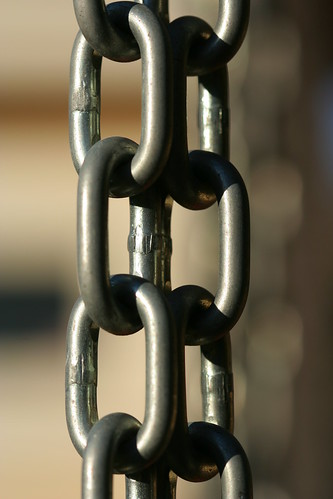
The Weakest Link in Cooperation
In this class, we reviewed the results of the OPEC game. The main lesson of this game is to provide practice in achieving cooperation in difficult environments. The two main difficulties in this setting are: (1) lack of observability; and (2) limited tools for punishment and reward. As we saw in GE v Westinghouse, these are common obstacles in many settings.
How do we solve this problem?
Judo Highlights

An Unpromising Landscape?
The judo class was a capstone for the ideas of the first half of the course. In strategy, the easy thing is to identify promising business landscapes. The problem is that others can identify these same situations, and the space quickly becomes crowded. In strategy, being successful when you have a competitive advantage, while not easy, is much more promising than situations where you have no such advantage. So how do you find opportunities in unpromising settings where you have no advantage? (One good thing about such settings is that others are probably not looking there.)
Monday, March 21, 2011
Final Projects Clearinghouse

A Potato Clearinghouse?
To help mitigate the coordination problem in project selection, please use the comment area below to report your final project. The rules for this are as follows: (1) If you chose topic X for the mid-semester project, then you own that topic and are free to pursue it for the final. (2) Any new topic Y is owned by the first team to make a comment on the website. No other team can claim this topic.
My goal is to avoid the level of topic duplication we saw in the mid-semester projects.
OPEC Round 9/Cold Fusion Round 10

Solar Energy
Round 9 Results:
Market A: Price $26.20, Q = 68,259
Market B: Price $26.97, Q = 68,153
Cold Fusion Coin Flip = Heads. So cold fusion is invented prior to round 10. This means that Round 9 was the last round of the game.
The P&L results of the OPEC are posted on the P&L spreadsheet. I've also posted the results for the Judo game. I notice that some spectrum results are still not posted. Please add these unless the payoff was zero for this game.
Friday, March 18, 2011
Thursday, March 17, 2011
OPEC Round 8

Results:
A: Price 26.23 Q = 68,182
B: Price 26.00 Q = 69,356
Please note that the results for the first round of cold fusion will be reported on Friday. There is a 10% chance of invention. Following this, I will sim out all the rest of the results of the game assuming no cooperation for the remaining periods and report final results.
Wednesday, March 16, 2011
Mid-Term Project Due Date
Mid-term projects are due by 1159pm Hawaii time on Weds March 30, 2011. Please submit these either as hardcopies (recommended if you use color) or pdf. Please note, if submitted pdf, I only have a BW printer, so any color stuff will be lost. Make sure that graphs etc look good in BW.
Tuesday, March 15, 2011
Upgrades
In my efforts at continuous quality improvement, I have gone over the mid-semester evaluation forms with the class rep. Overall, you seem to like the class (with one exception) but there are always ways to make it better. Here is a list of the upgrades so far:
1. Change the channel. Some of you complained that the run time for the videos was too long for the information provided. Therefore, all new videos now come with exec summaries for busy people who do not have time to watch.
2. Dates not class numbers: Some of you complained that using class numbers to refer to classes in the syllabus and in my discussion of past concepts is confusing. Therefore, I've now retrofitted the syllabus with dates. I've also tied the take aways on the blog (which are listed by class number) to the syllabus, so that you can more readily correlate the class number with the date. If you turn to the syllabus, you'll now see hyperlinks to the takeways to make this connection easier.
3. Too many problem sets: Several of you complained about the workload of the course, particularly the problem sets. Apparently the three problem sets required over the first 8 weeks of class were unduly burdensome. You also wondered what the point of the problem sets was. The point of the problem sets is to get you to see the math behind the games (something that several of you wanted more of). Nonetheless, I aim to please. Since problem sets are a pain for me to grade and you don't want them...they're gone. PS3 is the last problem set for the course.
4. Why do I have to post the results? This is the first year that I had you post the results of experiments. This change in the course, which was suggested by last year's MBAs, has received mixed reviews. Several of you thought that you really shouldn't have to post your own results and that I should take care of all the logistics. When I handled all scoring, I would send numerous nag emails to remind you to send me the results of experiments so I could input them. This process just ends up wasting (mostly my) time though some teams complained about the nag emails. You still have to send me an email with the results (which is about the same as inputting them to the online spreadsheet), while I have to nag you and then transcribe the results from the email. I'm not changing this since it really won't save you any time.
Now for the one exception: One of you wrote that the games I designed for the class were "stupid and useless." You were clearly very unhappy in the course. Since the games are the main things I have to offer, I'm happy to give you a refund as best I can. I don't want dissatisfied customers. Therefore, I'll sign whatever forms are needed to allow you to exit the course. Please come see me offline.
For the record, I believe that the games are some of the most effective tools for learning about strategy and leadership you'll encounter as an MBA.
Please note that if any of these upgrades are, in fact, perceived as downgrades, if I hear enough dissension, I'll switch back.
I'll post more as I come up with additional upgrades. I'll also discuss the results of the evals in more detail in class #17 (3/28/11)
1. Change the channel. Some of you complained that the run time for the videos was too long for the information provided. Therefore, all new videos now come with exec summaries for busy people who do not have time to watch.
2. Dates not class numbers: Some of you complained that using class numbers to refer to classes in the syllabus and in my discussion of past concepts is confusing. Therefore, I've now retrofitted the syllabus with dates. I've also tied the take aways on the blog (which are listed by class number) to the syllabus, so that you can more readily correlate the class number with the date. If you turn to the syllabus, you'll now see hyperlinks to the takeways to make this connection easier.
3. Too many problem sets: Several of you complained about the workload of the course, particularly the problem sets. Apparently the three problem sets required over the first 8 weeks of class were unduly burdensome. You also wondered what the point of the problem sets was. The point of the problem sets is to get you to see the math behind the games (something that several of you wanted more of). Nonetheless, I aim to please. Since problem sets are a pain for me to grade and you don't want them...they're gone. PS3 is the last problem set for the course.
4. Why do I have to post the results? This is the first year that I had you post the results of experiments. This change in the course, which was suggested by last year's MBAs, has received mixed reviews. Several of you thought that you really shouldn't have to post your own results and that I should take care of all the logistics. When I handled all scoring, I would send numerous nag emails to remind you to send me the results of experiments so I could input them. This process just ends up wasting (mostly my) time though some teams complained about the nag emails. You still have to send me an email with the results (which is about the same as inputting them to the online spreadsheet), while I have to nag you and then transcribe the results from the email. I'm not changing this since it really won't save you any time.
Now for the one exception: One of you wrote that the games I designed for the class were "stupid and useless." You were clearly very unhappy in the course. Since the games are the main things I have to offer, I'm happy to give you a refund as best I can. I don't want dissatisfied customers. Therefore, I'll sign whatever forms are needed to allow you to exit the course. Please come see me offline.
For the record, I believe that the games are some of the most effective tools for learning about strategy and leadership you'll encounter as an MBA.
Please note that if any of these upgrades are, in fact, perceived as downgrades, if I hear enough dissension, I'll switch back.
I'll post more as I come up with additional upgrades. I'll also discuss the results of the evals in more detail in class #17 (3/28/11)
Sunday, March 13, 2011
OPEC Period 6
And for those too busy for the video, here's the executive summary:
A: Price = 26.34, Q = 69,647
B: Price = 38.22, Q = 65,091
A: Price = 26.34, Q = 69,647
B: Price = 38.22, Q = 65,091
Friday, March 11, 2011
OPEC Round 5
No time for video on this go. Aidan is too busy with his new Pokemon Black game. Here are the results:
Market A: $25.33 with Q = 68,269
Market B: 45.31 with Q = 61,204
The moderated market seems to have settled into a happy equilibrium while market A remains as dysfunctional as always.
Market A: $25.33 with Q = 68,269
Market B: 45.31 with Q = 61,204
The moderated market seems to have settled into a happy equilibrium while market A remains as dysfunctional as always.
Wednesday, March 9, 2011
Feedback
As it is halfway through the course, now is a great time to get feedback. While the mid-semester evals provide useful feedback for the course itself, I wanted to get a little feedback on the blog and other electronic aspects of the course. What do you like? What would you like to see more of? Less of? Leave me some comments to let me know. If you think everything is great, feel free to leave me a comment saying that. If not, tell me what to improve.
Halftime

Getting Ready for the Second Half
We're at the halfway mark in game theory. It's time to take stock of the main lessons learned.
1. Outward thinking
The goal of the class is to change how you think, to get you to view the world through an interactive/game theory lens. Outward thinking is the shorthand used to describe this process. It means analyzing situations by anticipating the rival's response and then "changing the game" with this in mind to find a successful outcome. Outward thinking sheds light on new opportunities (like how to make money when you have no form of competitive advantage whatsoever) as well as new ways to use the tools you've already developed (like using an option to stifle competition).
Class 14 Take Aways

Small is Beautiful
This class completed our segment on game theory in practice. It also marks the end of the first half of the course. In this unit, we learned how a "small is beautiful" strategy can allow an entrant to prosper even if it lacks any form of competitive advantage whatsoever. The key is the correct marketing mix---targeting only a subsegment of consumers and charging prices much lower than the incumbent. The strategy works because the incumbent lacks the flexibility to price discriminate between targeted and untargeted customers. It's another example of how outward thinking can create new uses for standard tools (like targeting).
Class Presentation Times
Class 15 (March 14th)
1. MOAB
2. Max Payoff
3. Getting’ Nashty
4. Moral Hazards
5. F is a Big Deal
6. Class Reps
7. Yankees 27
Class 16 (March 16th)
1. Seagull
2. Mrs. Bento
3. Don’t Hate the Playa
4. Playadize
5. Free Rider
6. Money on the Night Stand
7. What Should I Do
8. Free Agents
1. MOAB
2. Max Payoff
3. Getting’ Nashty
4. Moral Hazards
5. F is a Big Deal
6. Class Reps
7. Yankees 27
Class 16 (March 16th)
1. Seagull
2. Mrs. Bento
3. Don’t Hate the Playa
4. Playadize
5. Free Rider
6. Money on the Night Stand
7. What Should I Do
8. Free Agents
Judo
The judo spreadsheet is located at
https://spreadsheets.google.com/ccc?key=0AtUueq554t8-dEw2anh2cWVtY0F2SDNHaTd3VENRUmc&authkey=COjgnZwF&hl=en#gid=2
Please input your P&L for this game on the P&L spreadsheet. All P&L numbers for this game should be your dollar profits divided by 10.
https://spreadsheets.google.com/ccc?key=0AtUueq554t8-dEw2anh2cWVtY0F2SDNHaTd3VENRUmc&authkey=COjgnZwF&hl=en#gid=2
Please input your P&L for this game on the P&L spreadsheet. All P&L numbers for this game should be your dollar profits divided by 10.
Syllabus - Revised Topic Order
As I mentioned, the syllabus is slightly rejiggered for the timing of OPEC. This class we will cover Judo (formerly class 19). I've also moved the timing and identity of the guest speaker. My friend from Deloitte is unable to make it, so I've added a guest speaker from Yahoo, an ethnographer named Elizabeth Churchill. She will be speaking during class #19 on how social motivations affect market design. Social is obviously a huge deal in online these days, so her talk should be really useful for those of you thinking about startups with a social dimension (i.e. all of you contemplating tech startups).
Tuesday, March 8, 2011
Class 13 Take Aways
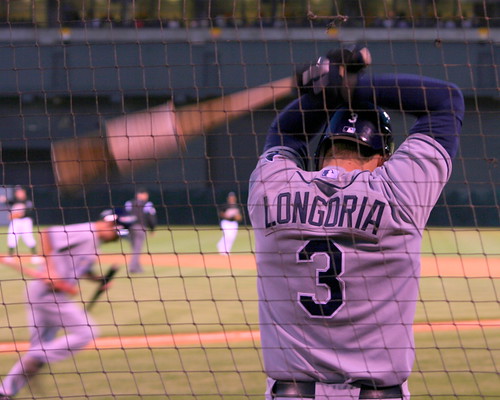
The Practice of Game Theory
This class was all about translating the ideas of game theory into practice. In GE v Westinghouse, we saw how GE was able to use simple measures to create price discipline in the market. Specifically, it made prices transparent both in its price book and in disclosing prices and orders. The idea here is to make cheating easy to detect.
OPEC Period 4 Results
Too busy for a video today, so the results are in boring format:
Market A:
Price: 25.76
Quantity: 70,646
The punishment period apparently continues for Market A
Market B:
Price: 43.13
Quantity: 62,660
Market B seems to have sorted things out and is back to cooperating (to some extent)
Market A:
Price: 25.76
Quantity: 70,646
The punishment period apparently continues for Market A
Market B:
Price: 43.13
Quantity: 62,660
Market B seems to have sorted things out and is back to cooperating (to some extent)
Sunday, March 6, 2011
Thursday, March 3, 2011
Wednesday, March 2, 2011
Mid Semester Topics Clearinghouse

A Coordination Game?
Coordination is a pretty good thing. In an effort to facilitate coordination, this blog entry represents a clearinghouse for mid-semester project topics. I'll list topics for a couple of teams. Please add your team's topic in the comment section below.
Money on the Nightstand: NFL lockout
Mrs. Bento: Amazon's entry into streaming video
Class 12 Take Aways

The Better Angels of Our Nature?
Why do organizations grow bureaucratic and rule-bound as they scale up? In this class, we saw how game theory can explain this phenomenon. This class was all about impediments to achieving cooperation in the face of social dilemmas. Here, we highlighted the social aspect of solving social dilemmas. In a small enough society, punishment by ostracism can deter bad behavior. The idea is that, while interactions with any particular individual in a society might be rare, if individuals talk, then a society level punishment might be sustained in the face of bad behavior.
Tuesday, March 1, 2011
Monday, February 28, 2011
Samples

Free Samples
Many of you have asked about ideas for the mid semester project. There are many samples on the course website under the handouts tab of the course website. There you will find about 12 mid semester projects and 14 final projects from last year's class. This should give you some ideas about the scope, depth, and breadth of these projects.
Class 11 Take Aways

Thinking of Tomorrow
In this class, we learned about how to leverage the future to overcome social dilemmas. To be successful, a strategy must have: (1) rewards for good behavior, (2) punishment for bad behavior, and (3) forgiveness or proportionality of punishment in case of mistakes. The strength of the punishment needed depends on the size of the temptation in the present as well as the value of future rewards. Greater temptation or less future reward require greater punishment.
There are limits to sustaining cooperation and trust. When discounting of future cash flows is great or the chance that the game will continue is small then it may not be possible. The limit of when cooperation is sustainable is made by comparing rewards and punishments under a grim trigger strategy--the threat to be mean forever following any transgression.
Sunday, February 27, 2011
Final Farmville Update

The Sun Sets on Farmville
Here's the final update: For both markets, verdant sold for 3, meadow for 2, and rocky for 1 in round 9. The market collapsed in round 10 with verdant selling for 1 and the others for zero. Hyperfarming was invented in period 11, so 10 was the last period. I've filled in the P&L for each team on the P&L spreadsheet at the site. In doing so, I noticed only a few teams put up P&L numbers for spectrum. Please put these up on the site.
Happy Farming.
Wednesday, February 23, 2011
Apple and Farmville
We typically think of Apple as using a classic differentiation strategy. They make elegant products that appeal to customers with a taste for high quality user experiences and charge a premium price for this. While that strategy has been very effective for Apple, it suffers from the imitability problem. As rivals produce products that are cheaper than Apple and reasonable substitutes in quality, Apple tends to lose share. The classic example of this was the development of the Window OS, which massively undercut Apple's advantage in UI quality.
Class #10 Take Aways

A Pyramid Framework
In Class #10, we worked out a framework for analyzing games. At the bottom of this framework is data, the building blocks for doing interactive strategy. The level above this is competitor analysis. Here we take our first cut at working out the details of payoffs and strategies available in the game as well as starting to make a mental model of our rival.
Class # 9 Take Aways

A Teams Problem
In class #9, we talked about the teams or partners problem. The problem goes like this: two partners work on a project. Each unit of effort returns 1+x dollars and imposes a personal cost of $1. Assume x < 1.
The problem is that individual effort cannot be directly observed.
Class #8 Take Aways

An Allocation Problem
In class #8, we discussed market design--what is the right way to allocate spectrum licenses? One way of allocating the licenses is to use a Vickrey auction.. This auction has the "pay your harm" property. You pay an amount equal to the harm you cause to the surplus of other bidders. With one unit for sale, harm is done to the second highest bidder in the amount of her bid, so the high bidder pays second highest bid.
Tuesday, February 22, 2011
Farmville Round 8
No property transactions or upgrade. Prices hold steady at 3, 2, 1 in both markets.
Saturday, February 19, 2011
Thursday, February 17, 2011
Farmville Period 6
Things were the same in both markets, so only one Farmville report.
Upgrades: Don't H8 the Playa upgrades 3 meadow to verdant. Class Reps upgrades 3 meadows to verdant, Playadize upgrades 1 meadow to verdant.
Upgrades: Don't H8 the Playa upgrades 3 meadow to verdant. Class Reps upgrades 3 meadows to verdant, Playadize upgrades 1 meadow to verdant.
Tuesday, February 15, 2011
FarmVille Period 5
Market A
Market B
Upgrade Decisions:
Key: Team, Meadow to Verdant, Rocky to Meadow
F is a Big Deal, 3, 3
Mrs. Bento 15, 1
Free Riders 9, 0
Money on the Nightstand 3, 0
Gettin' Nashty 3, 0
Free Agents 3, 1
MOAB 3, 1
Class Reps 3, 3
Dont H8 the Playa 0, 3
Playadize 3, 1
Market B
Upgrade Decisions:
Key: Team, Meadow to Verdant, Rocky to Meadow
F is a Big Deal, 3, 3
Mrs. Bento 15, 1
Free Riders 9, 0
Money on the Nightstand 3, 0
Gettin' Nashty 3, 0
Free Agents 3, 1
MOAB 3, 1
Class Reps 3, 3
Dont H8 the Playa 0, 3
Playadize 3, 1
Class # 7: Key Take Aways
In this class, we studied the game theoretic valuation of an asset. While the usual role for holding an asset in a company is for the cash flows it throws off, there can also be strategic reasons. The presence (or absence) of an asset can provoke certain types of strategic responses from rivals. In the case we studied, the presence of excess capacity created incentives for the rival to respond forcefully to a price cut.
Spectrum Auctions: Key Takeaways
Link: Results of Spectrum Experiment
Our first variant in the spectrum auctions experiment was the Vickrey auction. William Vickrey first designed this auction in a single unit context in order to obtain truthful revelation of values as a dominant strategy. The key point of the auction is that your bid only determines the threshold price for winning and losing. It does not determine the price you pay. When there's only a single object, it is easy to see how this works. Since I pay the amount of the second highest bid, my bid merely determines the maximum price I could possibly pay. As such, I can do no better than to set this threshold equal to my value.
Our first variant in the spectrum auctions experiment was the Vickrey auction. William Vickrey first designed this auction in a single unit context in order to obtain truthful revelation of values as a dominant strategy. The key point of the auction is that your bid only determines the threshold price for winning and losing. It does not determine the price you pay. When there's only a single object, it is easy to see how this works. Since I pay the amount of the second highest bid, my bid merely determines the maximum price I could possibly pay. As such, I can do no better than to set this threshold equal to my value.
Saturday, February 12, 2011
Thursday, February 10, 2011
Class #6: Take Aways
 A Hawk-Dove Game in Action
A Hawk-Dove Game in ActionIn class #6, we formally introduced the notion of Nash Equilibrium. A Nash equilibrium is a set of strategies that are mutual best responses. We also talked about archetypal games, games representing a wide array of real world business situations. These included: pure coordination games, battles of the sexes (coordination with a distributive element), hawk-dove (coordination with distributive and risky elements), stag hunt (simple model of trust), and prisoners dilemma. A key observation is that rationality is not sufficient to avoid bad outcomes. While individuals might be perfectly rational, strategic interaction can produce collective irrationality.
Tuesday, February 8, 2011
Saturday, February 5, 2011
FarmVille Period 1 Results
Market B Results
Market A Results
Please note, the video reverses markets A and B owing to a transcription error on my part. All references to market B are for market A and vice-versa. Apologies for the glitch.
FarmVille FAQ
Thursday, February 3, 2011
Contact Information
Apparently some of you are very shy since there are only 3 teams with contact info on the board at present. Team Don't H8 the Playa kindly asked me to prod all of you to provide contact information. Apparently, they're ready to wheel and deal and looking for folks to trade with. To provide your info, go to the game theory P&L and add it to the "contact info" column on the spreadsheet. The direct link is:
Link: https://spreadsheets.google.com/ccc?key=tJkfldzw-qQHHuX3GLk_4uw#gid=0
Link: https://spreadsheets.google.com/ccc?key=tJkfldzw-qQHHuX3GLk_4uw#gid=0
Wednesday, February 2, 2011
McCain-Schumer Debrief

The key variation in the experiment turned on the timing of the game or, equivalently, the disclosure policy of Pharma. When a game is sequential, there is a chance to influence the rival's move with your move. In a simultaneous game, this is not possible. While it is normally to your disadvantage to reveal private information, when that information is your action choice, disclosure can be advantageous owing to this strategic influence.
Class #4: Key Takeways

Class #4 ended the unit on Look Forward, Reason Back. Here, we saw how the tools of game theory could be used to determine the appropriate course of action in the face of the threat of entry. In the case, Coors could opt for a proactive strategy, advertising in advance of the entrant, or a reactive strategy, advertising only if the entrant came into the market. Instinct would suggest that the proactive strategy is better, but game theory illustrates the possibility that the reactive strategy is the right one. The key condition is whether Coors will carry through with its threat to advertise if AB enters. If this is not credible, then Coors needs to take steps to make it credible.
The broader point is that simple tools of game theory can be extremely helpful in systematically analyzing strategic situations and determining the right course of action rather than relying purely on instinct.
FarmVille

For the next couple of weeks, we will be running the game Farmville outside of class. This game illustrates the connection between game theory and competitive advantage in strategy. There will be two markets, one consisting of 8 teams and the other of seven teams. Please read the instructions in advance of class and I'll explain in class.
Road Map: Classes 6 and 7

In class #6, we will discuss how to analyze games with simultaneous moves and highlight a number of "building blocks" for studying strategic situation. Please read the class notes in advance. Class #7 introduces the idea of dominant strategies. Here, we will be doing an experiment simulating the radio spectrum auctions.
Monday, January 31, 2011
Class # 3: Key Takeaways

The Long shadow of the Endgame?
Class #3 concluded our unit on look forward, reason back. There were three key observations to come out of this unit.
1. The long shadow of the endgame--the end of the game casts a "shadow" over the entire strategic interaction.
Wednesday, January 26, 2011
NBA Free Agency Key Takeaways

The central point of the experiment was to illustrate the difference between the game theoretic value of an option compared to the valuation of options in finance. In the NBA free agency game, the option provokes a strategic response from the rival team. Specifically, the presence of the option destroys the possibility of bidding successfully for the player and hence nullifies competition. The option is only valuable when it is not exercised. Exercising the option means that it has failed to stave off competition.
Class #2 Key Takeaways

In class #2, we started talking about the fundamental rule of thinking strategically--look forward and reason back. We illustrated this in two ways. First, in durable goods industries, often competition comes from future "selves" of the firm. For instance, a firm selling a technology product can look forward and anticipate that it will want to cut prices in the future.
Road Map: Classes 4 and 5
In class #4, we will be completing the Coors case and then playing the McCain-Schumer game. Please read the instructions carefully before class. In class #5, we will debrief McCain-Schumer and then talk about the case Game Theory and Business Strategy.
Monday, January 24, 2011
Experiment 1 Results
.
Please send me the results from the NBA game by Tues at 1159pm. Also, if you have not already done so, please send me the name of your team and its members. Finally, we currently have 15 teams, which is one too many. If you are team consisting of 3 members, please consider joining a larger team. All teams should have 4-5 members
Please send me the results from the NBA game by Tues at 1159pm. Also, if you have not already done so, please send me the name of your team and its members. Finally, we currently have 15 teams, which is one too many. If you are team consisting of 3 members, please consider joining a larger team. All teams should have 4-5 members
Wednesday, January 19, 2011
Road Map: Classes 2 and 3
Friday, January 14, 2011
Welcome to Game Theory
 Photo Credit: John Morgan
Photo Credit: John MorganWelcome to the Game Theory Blog. Here you will find updates and roadmaps for upcoming classes, results from experiments, videos, as well as key takeaways from each class. Please check back here for the latest. Please become a follower of this blog.
Also, it is ideal if the blog is interactive. Please submit comments if you have a take about what's covered in the blog or have suggestions for topics.
In preparation for Class 1, please check out the course overview lecture notes. You can find them here and here. The first of these links is the "live" syllabus. As new content is added, the links to that content will go live. The second is the handouts tab of the course website, for later reference.
For transparency reasons, the course website is not on bspace. You can find it here The reason is that bspace is walled off from Game Theory alumni. I want those who took the course in the past to be able to access the materials. As a result, I make everything available without walls.
See you in class!
Subscribe to:
Posts (Atom)







